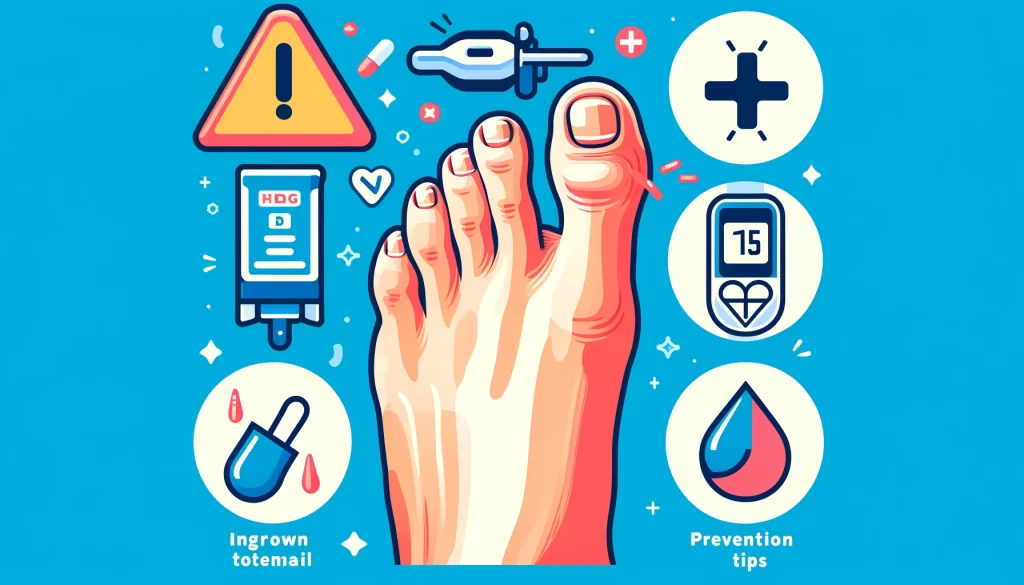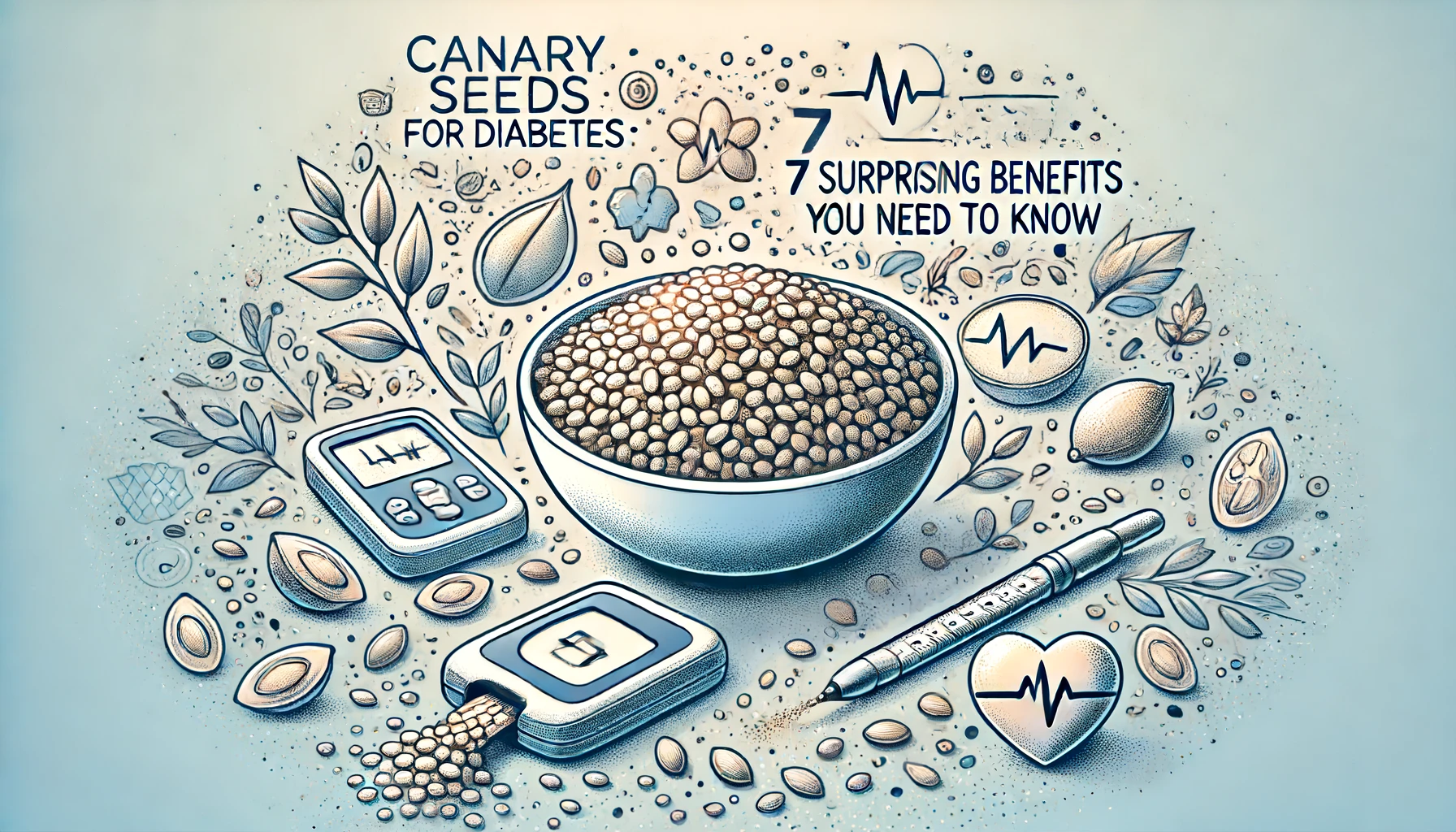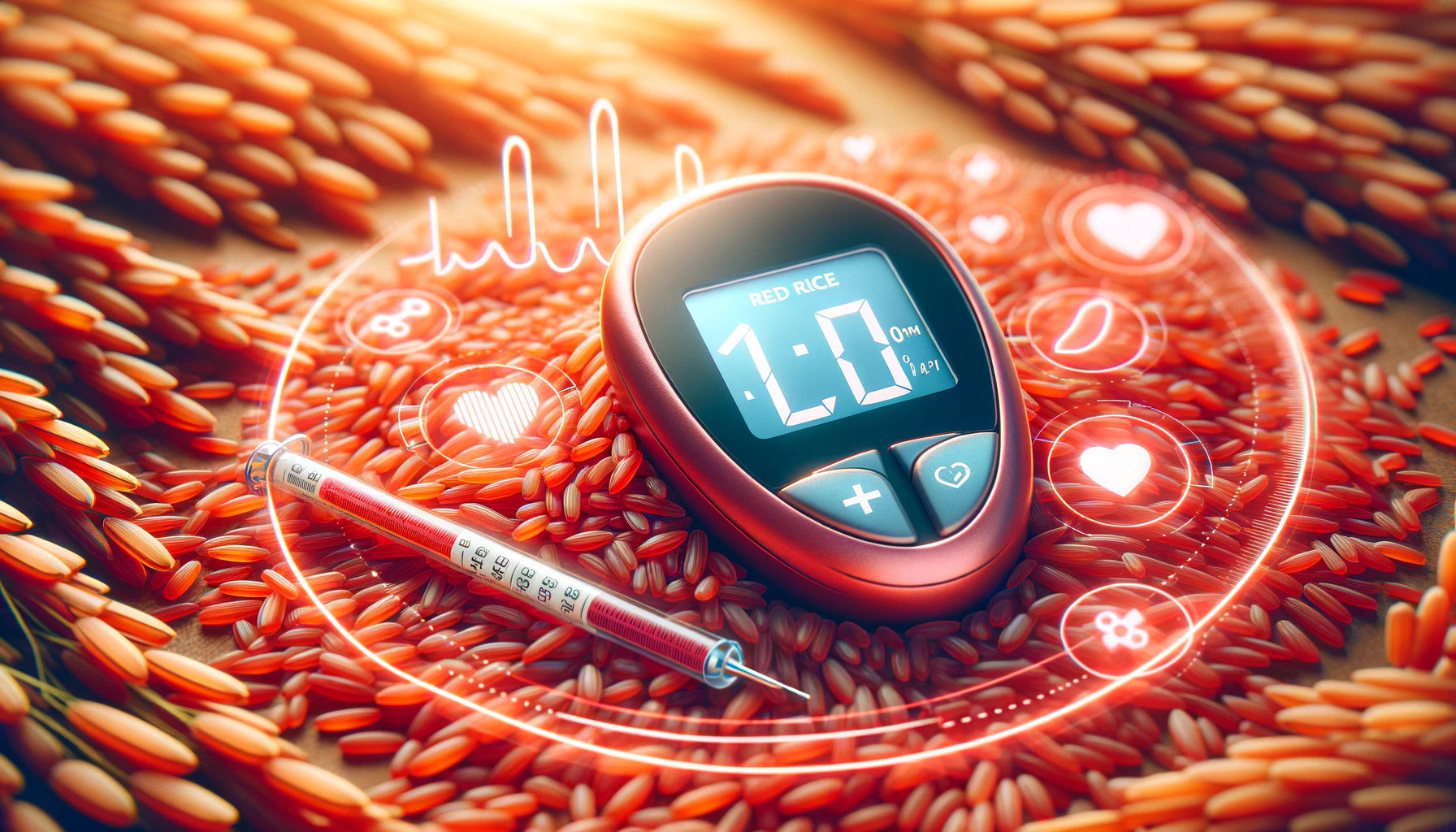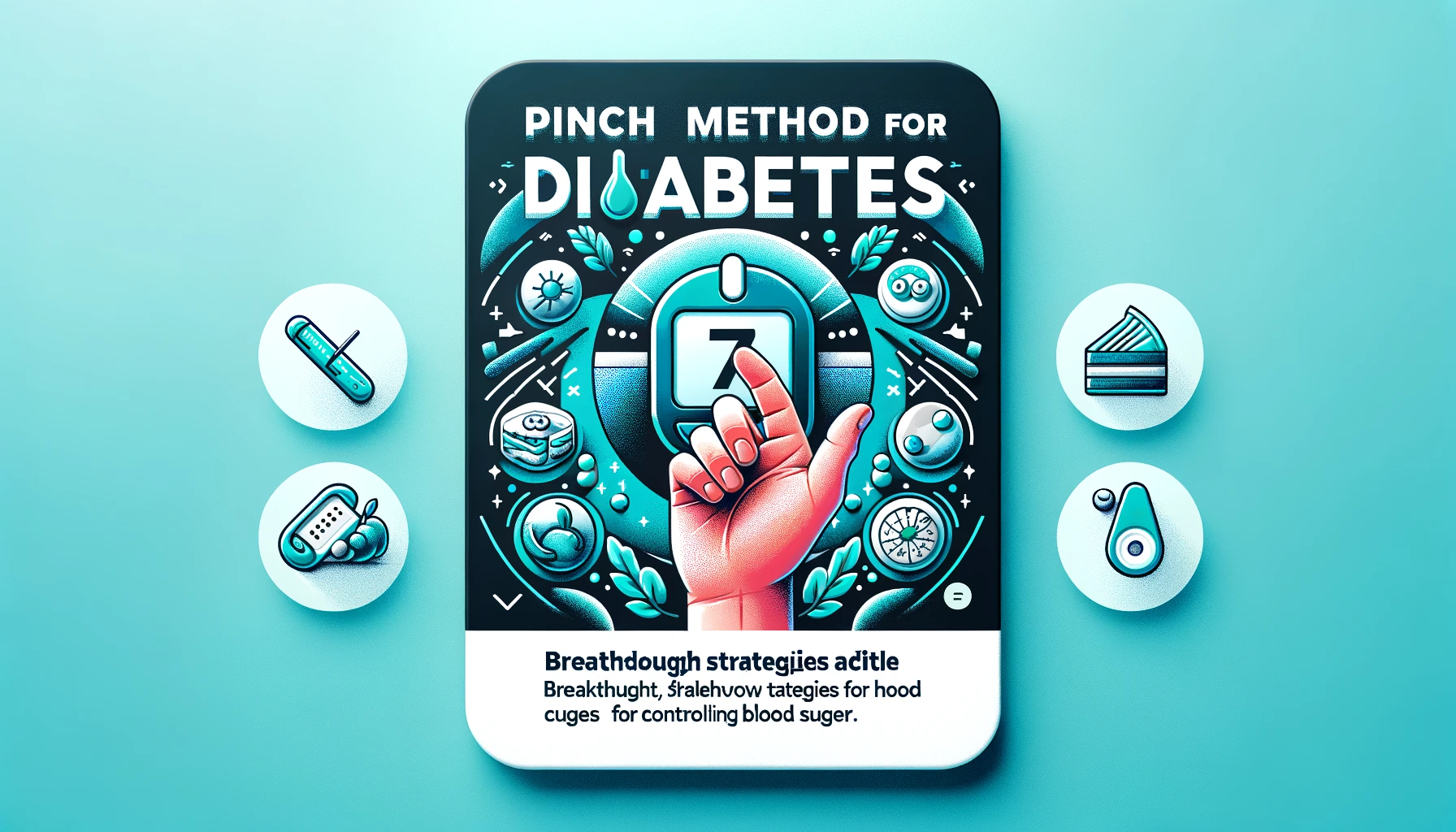Ingrown toenail and diabetes
Living with diabetes requires careful management of various health aspects, from blood sugar levels to diet and exercise. One often overlooked but critical issue for diabetics is foot care, particularly the risks associated with ingrown toenails. An ingrown toenail occurs when the edge of a toenail grows into the surrounding skin, leading to pain, swelling, and potentially severe infections. For individuals with diabetes, this condition can be especially dangerous due to impaired healing and increased risk of infection.
In this comprehensive guide, we will explore seven critical facts about ingrown toenail and diabetes that every diabetic must know to protect their health.
Contents
- 1 1. The Increased Risk of Infection
- 2 2. The Importance of Proper Footwear
- 3 3. The Role of Blood Sugar Control
- 4 4. Professional Foot Care
- 5 5. Home Care Tips
- 6 6. Recognizing Complications Early
- 7 7. Long-Term Foot Health Strategies
- 8 Conclusion: Ingrown toenail and diabetes
- 9 FAQ: Ingrown toenail and diabetes
- 10 Diabetes Related Posts
1. The Increased Risk of Infection
Understanding the Threat:
Diabetes can impair the body’s ability to heal wounds and fight infections. High blood sugar levels can damage blood vessels, reducing blood flow to the extremities, including the feet. This reduced circulation can make it harder for the body to deliver essential nutrients and oxygen needed for healing. Consequently, even minor injuries like an ingrown toenail can become severe infections if not properly managed.
What to Watch For:
Signs of infection include redness, swelling, warmth, pus, and increased pain around the toenail. For diabetics, these symptoms should be treated with heightened concern and immediate medical attention. Ignoring an infected ingrown toenail can lead to more severe complications, such as cellulitis (a deep skin infection), abscesses, or even the need for amputation in extreme cases.
Preventive Measures:
- Regular Foot Inspections: Check your feet daily for any signs of injury, redness, or swelling. Use a mirror to see the bottom of your feet if necessary.
- Proper Nail Care: Trim your toenails straight across and avoid cutting them too short to prevent the edges from growing into the skin.
- Moisturize: Keep your feet well-moisturized to prevent dry skin and cracks that can invite infections.
2. The Importance of Proper Footwear
Choosing the Right Shoes:
Wearing ill-fitting shoes can exacerbate the risk of developing ingrown toenails. Tight shoes or those with a narrow toe box can put pressure on the toes, encouraging the nails to grow into the surrounding skin. For diabetics, wearing appropriate footwear is crucial to avoid not only ingrown toenails but also other foot-related complications.
Key Features of Proper Footwear:
- Comfortable Fit: Shoes should have ample room in the toe box to avoid squeezing the toes.
- Breathable Material: Choose shoes made of materials that allow your feet to breathe and prevent moisture buildup.
- Supportive Soles: Ensure that the shoes provide adequate support and cushioning to reduce pressure on the feet.
Custom Orthotics:
For some individuals, custom orthotics may be beneficial. These specially designed shoe inserts can provide additional support and distribute pressure more evenly across the feet, reducing the risk of developing ingrown toenails and other foot problems.
3. The Role of Blood Sugar Control
Maintaining Optimal Blood Sugar Levels:
Effective blood sugar management is fundamental for overall health in diabetes and plays a significant role in preventing complications, including those related to ingrown toenails. Consistently high blood sugar levels can impair immune function and slow down the body’s healing processes.
Tips for Blood Sugar Control:
- Regular Monitoring: Keep track of your blood sugar levels as advised by your healthcare provider.
- Healthy Diet: Follow a balanced diet rich in whole grains, vegetables, lean proteins, and healthy fats. Avoid excessive sugar and processed foods.
- Regular Exercise: Engage in physical activities that you enjoy and can sustain, aiming for at least 150 minutes of moderate exercise per week.
- Medication Adherence: Take your medications as prescribed and discuss any concerns with your healthcare provider.
Impact on Foot Health:
Good blood sugar control can enhance your body’s ability to heal minor injuries and reduce the risk of infections, making it a critical aspect of preventing and managing ingrown toenails in diabetics.
ALSO READ: Sugar Defender Scam – (CAUTION 2024) Fraud Risks to Avoid or Safe Ingredients That Work?
4. Professional Foot Care

Importance of Regular Podiatrist Visits:
For diabetics, regular visits to a podiatrist (foot specialist) are essential. A podiatrist can provide professional nail care, treat existing foot problems, and offer advice on preventing future issues.
Benefits of Podiatrist Care:
- Expert Trimming: A podiatrist can trim your toenails properly, reducing the risk of ingrown toenails.
- Early Detection: Regular check-ups allow for the early detection and treatment of foot problems before they become severe.
- Custom Advice: Personalized advice on foot care routines, suitable footwear, and any necessary interventions.
When to See a Podiatrist:
- Routine Check-Ups: Schedule regular appointments even if you do not have any current foot problems.
- Immediate Concerns: See a podiatrist at the first sign of an ingrown toenail or any other foot issues.
5. Home Care Tips
Safe Nail Trimming Practices:
Proper nail care at home is vital for preventing ingrown toenails. Here are some tips to follow:
- Use Clean Tools: Always use clean and sanitized nail clippers or scissors.
- Trim Straight Across: Cut your toenails straight across without rounding the corners.
- Avoid Cutting Too Short: Leave a small bit of white at the end of your nail to prevent it from digging into the skin.
Foot Hygiene:
Maintaining good foot hygiene is crucial for diabetics to avoid infections and complications:
- Daily Washing: Wash your feet daily with mild soap and warm water. Ensure to dry them thoroughly, especially between the toes.
- Moisturizing: Apply a moisturizer to keep the skin soft and prevent cracks, but avoid putting lotion between the toes to reduce the risk of fungal infections.
- Clean Socks: Wear clean, dry socks and change them daily. Choose socks made of moisture-wicking materials.
Managing Minor Injuries:
Even minor cuts or blisters can lead to serious complications for diabetics:
- Immediate Care: Clean minor injuries immediately and apply an antiseptic.
- Protective Dressing: Use sterile dressings to cover any cuts or blisters and change them regularly.
- Monitor Healing: Keep a close watch on the healing process and seek medical attention if you notice any signs of infection.
6. Recognizing Complications Early
Knowing When to Seek Help:
Being vigilant about changes in your feet and knowing when to seek medical help is crucial for diabetics. Early intervention can prevent minor issues from becoming severe complications.
Signs of Complications:
- Persistent Pain: If pain around an ingrown toenail does not improve or worsen.
- Signs of Infection: Redness, swelling, warmth, pus, or a foul odor.
- Changes in Skin Color: Any discoloration of the skin around the toenail.
- Numbness or Tingling: New or worsening numbness or tingling in the feet.
Action Steps:
- Consult Your Doctor: At the first sign of complications, contact your healthcare provider or podiatrist.
- Follow Professional Advice: Adhere to the treatment plan provided by your healthcare professional.
7. Long-Term Foot Health Strategies
Comprehensive Foot Care Plan:
A proactive and comprehensive foot care plan is essential for long-term health and the prevention of complications related to ingrown toenails and diabetes.
Regular Self-Checks:
- Daily Inspections: Check your feet daily for any changes or signs of injury.
- Use a Mirror: Utilize a mirror or ask for help to inspect hard-to-see areas.
Healthy Lifestyle Choices:
- Balanced Diet: Maintain a diet that supports overall health and blood sugar control.
- Regular Exercise: Engage in regular physical activity to promote circulation and overall well-being.
- Hydration: Stay well-hydrated to support skin health.
Professional Support:
- Routine Podiatrist Visits: Schedule regular visits to a podiatrist for professional foot care.
- Diabetes Management Team: Work with a healthcare team, including a diabetes educator, endocrinologist, and dietitian, to manage your overall health.
Conclusion: Ingrown toenail and diabetes

Ingrown toenail and diabetes
Managing diabetes effectively involves more than just monitoring blood sugar levels; it requires comprehensive care, including diligent foot health management.
Ingrown toenails, though seemingly minor, can pose significant risks for diabetics due to the potential for severe infections and complications.
By understanding the increased risks, prioritizing proper footwear, maintaining optimal blood sugar levels, seeking professional foot care, practicing good home care, recognizing complications early, and implementing long-term foot health strategies, diabetics can significantly reduce the risk of ingrown toenails and related complications.
Remember, proactive and informed care is the key to maintaining healthy feet and overall well-being when living with diabetes.
ALSO READ: Sugar Defender Reviews – [UPDATED 2024] Does It Really Work?
FAQ: Ingrown toenail and diabetes
-
Why are diabetics more prone to complications from ingrown toenails?
Diabetics are more prone to complications from ingrown toenails because high blood sugar levels can damage blood vessels, reducing blood flow to the extremities. This impaired circulation can slow down healing and increase the risk of infections, making even minor injuries like ingrown toenails potentially serious.
-
What are the signs of an infected ingrown toenail in diabetics?
Signs of an infected ingrown toenail include redness, swelling, warmth, pus, increased pain, and sometimes a foul odor. Diabetics should seek immediate medical attention if they notice any of these symptoms to prevent further complications.
-
How can diabetics prevent ingrown toenails?
Diabetics can prevent ingrown toenails by:
▪ Trimming toenails straight across without rounding the corners.
▪ Avoid cutting toenails too short.
▪ Wearing properly fitting shoes with enough room in the toe box.
▪ Keeping feet clean and moisturized.
▪ Regularly inspecting feet for any signs of injury or changes. -
What type of footwear is recommended for diabetics to avoid ingrown toenails?
▪ Diabetics should wear shoes that:
▪ Have a comfortable fit with ample room in the toe box.
▪ Are made of breathable materials to prevent moisture buildup.
▪ Provide adequate support and cushioning to reduce pressure on the feet.
▪ Consider custom orthotics if needed for additional support. -
Why is regular foot inspection important for diabetics?
Regular foot inspections are important for diabetics to detect any early signs of injury, redness, swelling, or infection. Early detection allows for prompt treatment, which can prevent minor issues from developing into serious complications.
-
How often should diabetics visit a podiatrist?
-
What should diabetics do if they notice signs of an ingrown toenail?
If diabetics notice signs of an ingrown toenail, they should:
▪ Avoid attempting to treat it themselves.
▪ Keep the affected foot clean and dry.
▪ Seek immediate medical attention from a healthcare provider or podiatrist. -
How does maintaining optimal blood sugar levels help in preventing ingrown toenail complications?
Maintaining optimal blood sugar levels helps improve circulation and immune function, enhancing the body’s ability to heal minor injuries and reducing the risk of infections. Good blood sugar control is essential for overall foot health in diabetics.
-
What are some home care tips for diabetics to manage their foot health?
Home care tips for diabetics to manage foot health include:
▪ Washing feet daily with mild soap and warm water, then drying thoroughly.
▪ Moisturizing feet to prevent dry skin and cracks, avoiding lotion between the toes.
▪ Wearing clean, dry socks daily.
▪ Trimming toenails properly and using clean tools.
▪ Inspecting feet daily for any signs of injury or changes. -
What long-term strategies can diabetics implement for optimal foot health?
Long-term strategies for optimal foot health in diabetics include:
▪ Regular self-checks and professional foot care.
▪ Wearing appropriate footwear and using custom orthotics if necessary.
▪ Maintaining a healthy diet and regular exercise routine.
▪ Staying well-hydrated.
▪ Working with a diabetes management team for comprehensive health care.















